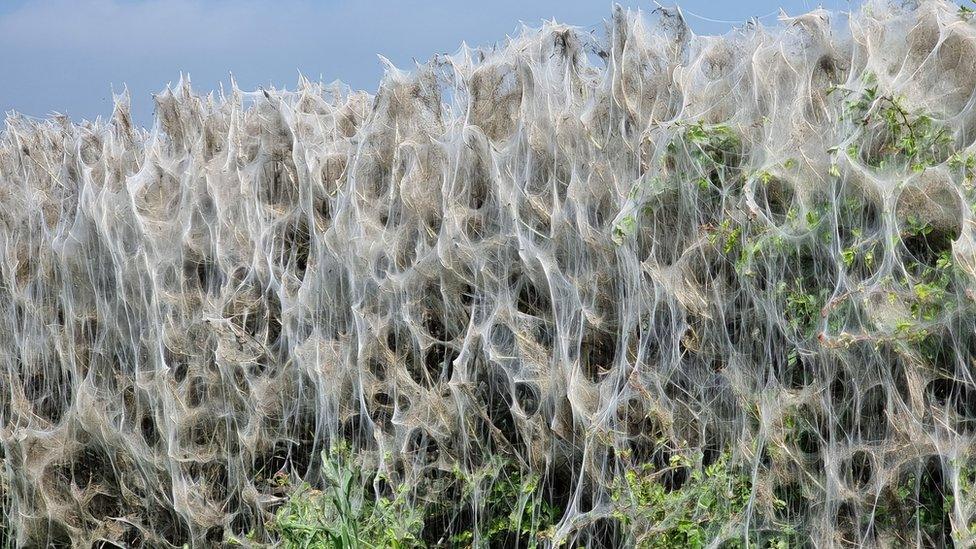'Spooky' phenomenon as moth webs cover street trees
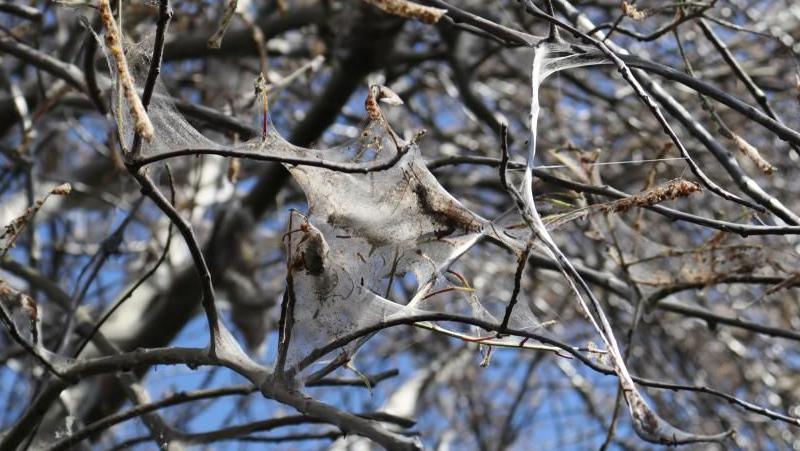
Numerous trees have been affected along the entire length of Waterloo Road in Beeston, Nottinghamshire
- Published
Residents living near "spooky" web-covered trees say they feel like they cannot open their windows because of an abundance of creepy crawlies.
Numerous trees and shrubs along Waterloo Road in Beeston, Nottinghamshire, have been taken over by bird cherry ermine caterpillars, external.
A wildlife expert said the silk webs were a "defensive" measure taken by the insects.
Mavis Jones, a local resident for 17 years, said she had never seen anything like this before and had been left clearing caterpillars away from her windowsill.
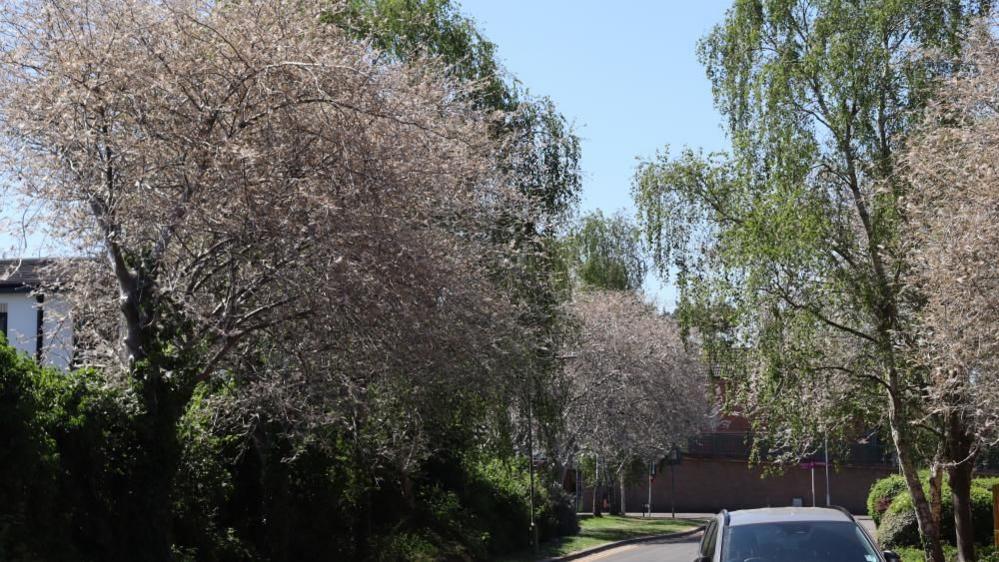
The ermine moth eggs are laid on trees in late autumn
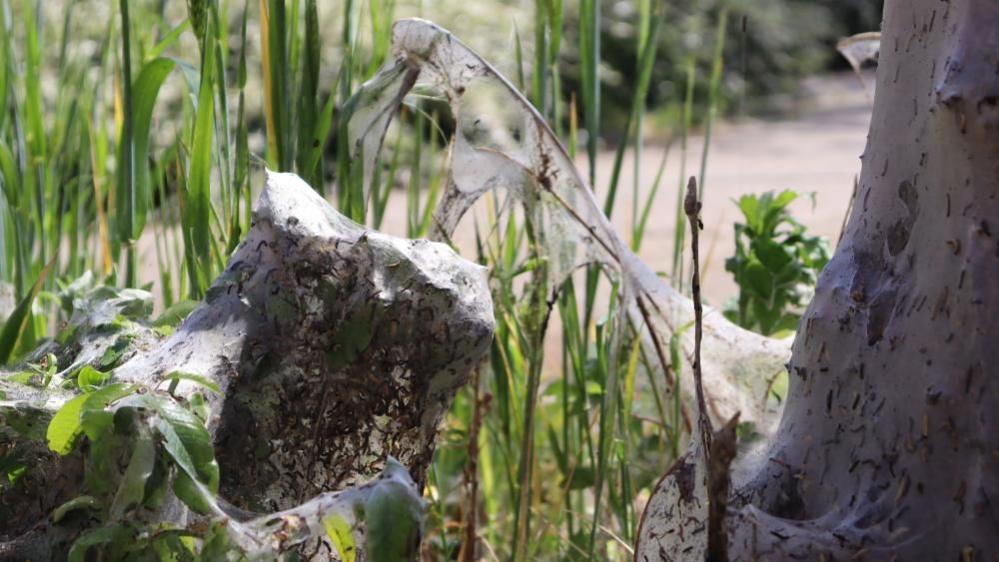
The silk webbing is covered in caterpillars, which will eventually turn into moths
"I like my windows open... I can't have them open in case they crawl in," she said. "I was spraying them with some bleach, but it didn't touch them."
Another resident, 54-year-old Lyn Abell, said the "disgusting" phenomenon meant she had to move her car to prevent the seats from being eaten.
"They're hanging [down], so you can't walk on the path; you've got to walk on the road. It's a nightmare," she said.
She added all of her flowers had died because of them, and she could not pick up her watering can because that had also been "covered in silk".
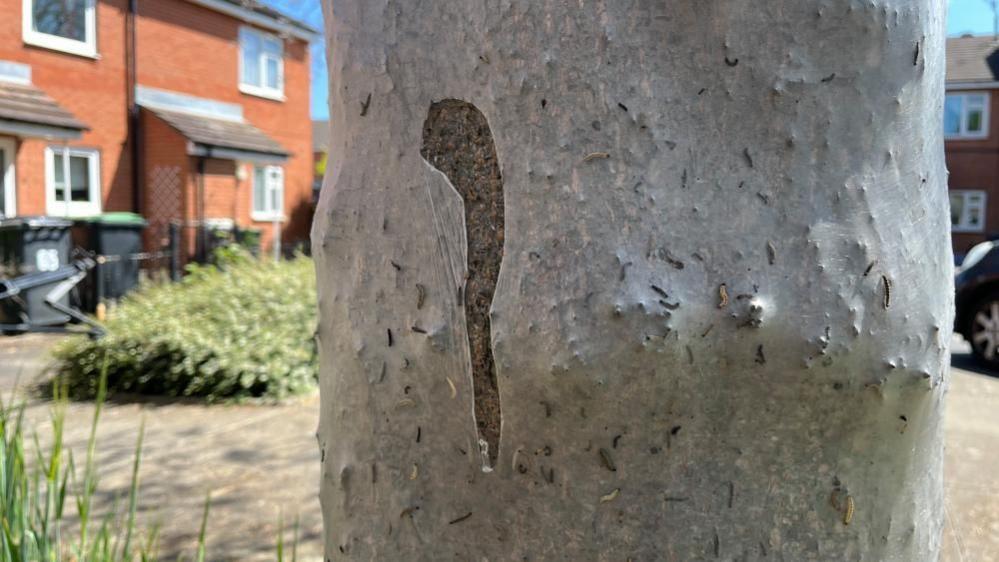
The silk covers the bark of the tree as well as the leaves, giving the appearance that the tree is white

Charles Shellard, who has lived in the area for two years, said it was a "strange" sight
Although the scene has left numerous residents feeling uneasy, there are other locals who find the circumstances "novel".
Charles Shellard, 24, said it appeared as though the trees had been "turned to stone or petrified", and that it looked "spooky".
"I think it's pretty cool to have such a strange sight around," he said.
"I'm quite looking forward to see if they all hatch and turn into beautiful butterflies at some point; that would be a good sight.
"It's just nice to see a bit of variation in nature, you know, these things you don't see every day."
'Totally harmless'
Tim Sexton, from Leicestershire and Rutland Wildlife Trust, said the silk "defensive" webbing was used by the caterpillars to protect themselves whilst they feed.
The ermine moth eggs are laid on trees in late autumn, which hatch over winter, and that leads into an "explosion of feeding activity" in spring.
"I think as soon as people start to see webs and caterpillars on trees, they always fear the worst and expect it to be one of these more toxic species," Mr Sexton explained.
"But these are totally harmless."
Mr Sexton said the intensity of the webbing this year could be attributed to the dry weather, because it was usually washed away by rainfall.
He added the trees, which currently appear bare, would normally recover.
"I think this webbing is going to continue, certainly for the foreseeable future, but it really is quite a spectacle," he said.
"I'd urge anyone to go out and have a look at it and enjoy the caterpillars for themselves."
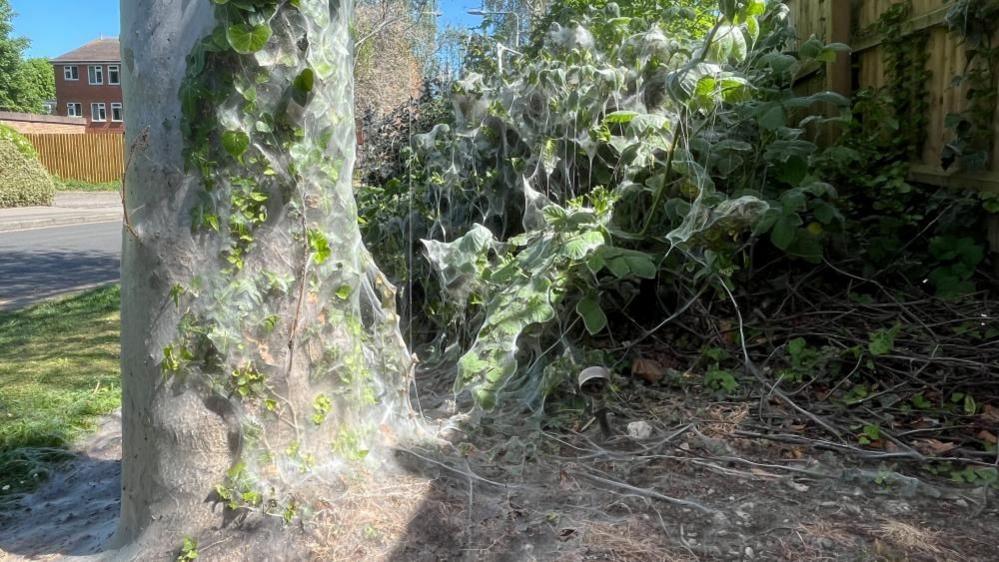
The webbing is likely to stay for the foreseeable future if the weather stays dry, an expert says
Get in touch
Tell us which stories we should cover in Nottingham
Follow BBC Nottingham on Facebook, external, on X, external, or on Instagram, external. Send your story ideas to eastmidsnews@bbc.co.uk, external or via WhatsApp, external on 0808 100 2210.
- Published4 June 2021
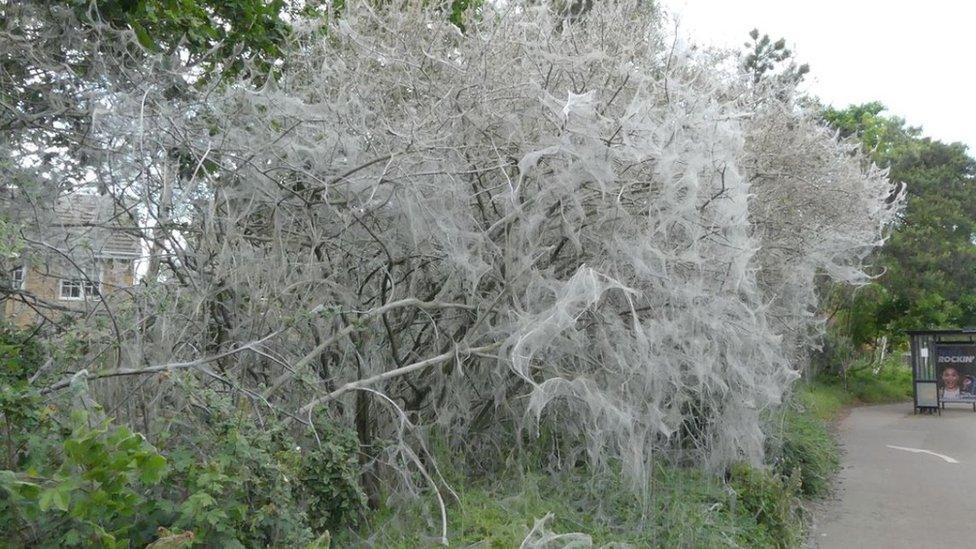
- Published2 June 2021
